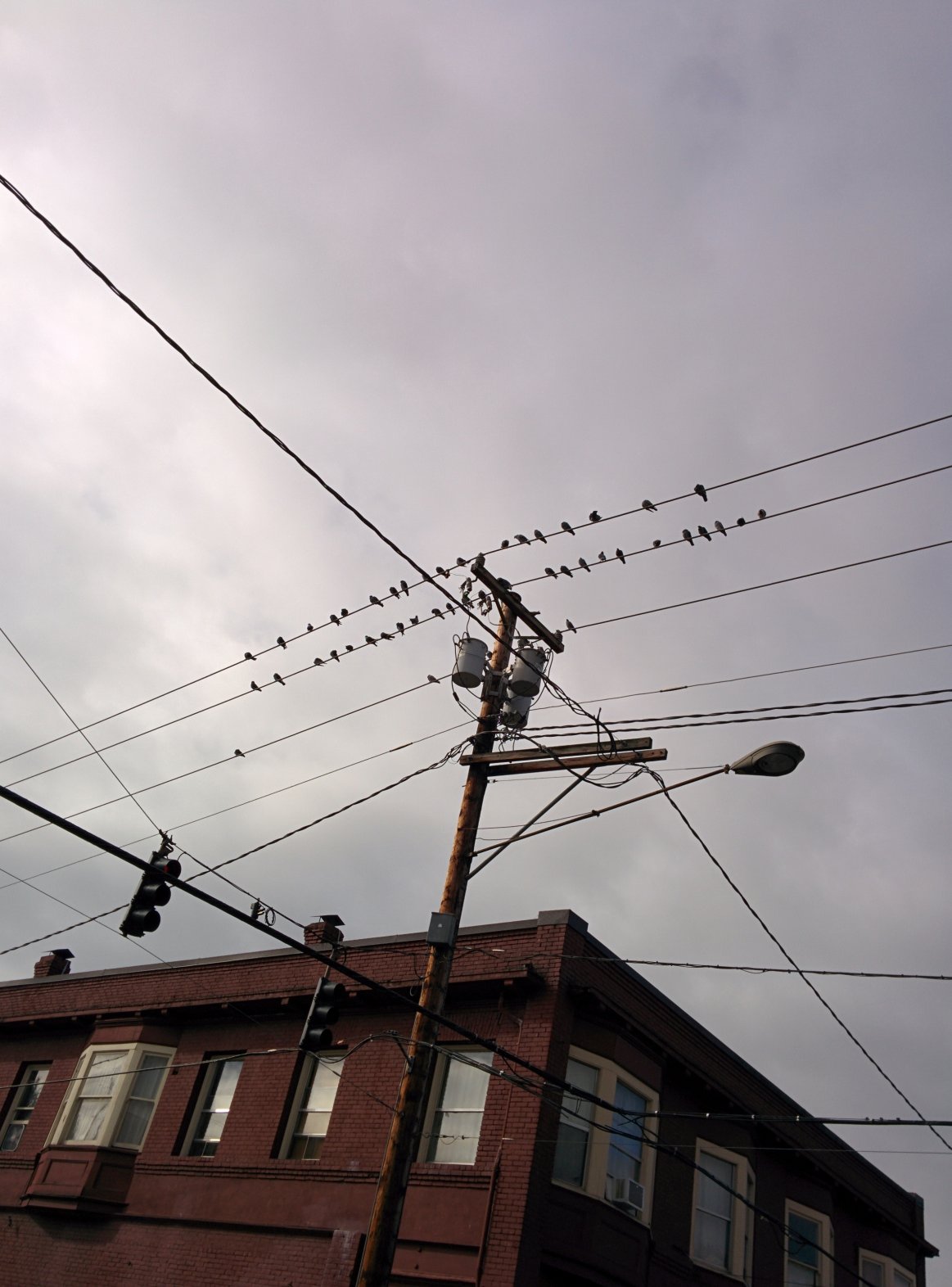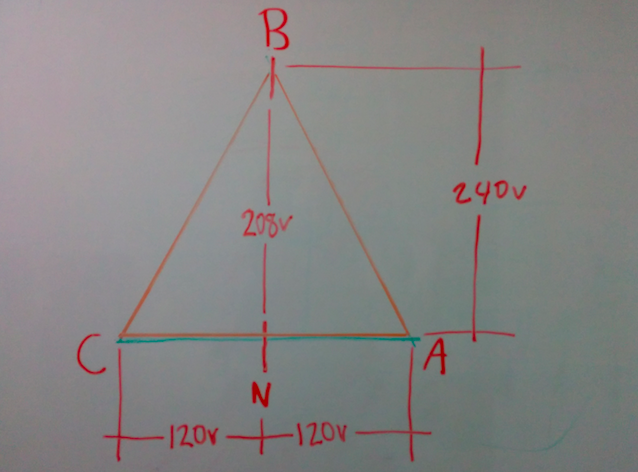

The North American electrical grid hasn’t changed much over the years, but it does contain a wide range of voltages and configurations at the point of delivery. 120/240 split phase and 480 3 phase are two well-known examples with many great choices of grid tied inverters available for those voltages.
With solar-sourced energy production spreading into every corner of the country, and the benefits of solar being applied to rural manufacturing, food production and small commercial sites, we are seeing more unusual service types, such as the 240V high leg delta.
The high leg delta service has a variety of advantages and disadvantages. One of the disadvantages from the perspective of the solar installer is that connecting a single phase inverter with a neutral wire to the wrong place will result in a non-working inverter.
The reason for this is that the neutral in the high leg delta is placed between two of the 240 phases, resulting in phase-to-neutral voltages of 120V and 208V, as indicated in the precise, scientific electrical diagram below.

High Leg Delta Service
The solar inverter, being very good at protecting itself from damage, will sense the 208V potential if connected between Phase B and the neutral, remain in standby status, and flash some kind if light, indicating a problem.
In almost all isolated, transformer based inverters (old school), the solution was to just not use the neutral. Most electrical inspectors had no issues with this and the inverter could be told during startup to ignore the neutral (neutral sense off), thus allowing a balanced array of inverters to feed all phases at once. Or, if only using one inverter, connecting to phases A-C and keeping the inverter small enough to not imbalance the system significantly.
Newer, more efficient, non-isolated, transformerless(TL) inverters do require a neutral connection (with one or two exceptions). So how does one connect to this service while still retaining the cost and efficiency benefits of the TL inverter? Following are some options along with some specific makes and models that can be used.
Option 1: Use a Transformer
For larger systems, it’s possible to use a larger, single inverter and then connect it to a transformer. For instance, instead of using three 7 kW single phase string inverters, use a single 20 kW three-phase string inverter
Option 2: Mix and Match
Instead of buying three heavy transformer based inverters and turning off neutral sensing, buy two of them and one of the newer TL versions (using the same manufacturer in order to share monitoring).
Option 3: Find a two-wire TL inverter
Solectria and SolarEdge allow their small string inverters (3800-7600TL) to be connected with no neutral.
In all cases, it’s very important to verify the allowed connection types with the inverter manufacturer. All reputable manufacturers are glad to review a 1-line or block diagram if you have an accurate depiction of the service type. Also, as soon as the system is designed and inverters are selected, submit to the local permit department and/or utility to confirm your type of service and the ability to connect without a Neutral if that is the chosen approach.